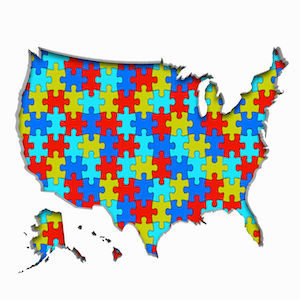
It is something you sometimes hear at election time: The names you’ve never heard on the state and local sections of the ballot actually have a greater effect on your life. But our attention is usually focused on the top of the ballot. The local newspaper is, in large part, a thing of the past, and we are all increasingly watching national news (CNN, MSNBC, FOX) rather than the local stations. These trends have magnified the national bias when it comes to attention to government, and have amplified the tendency for America’s strong tradition of anti-government attitudes to be concentrated at the top.
But the current crisis over the coronavirus has increased the visibility and salience of local and state governments. This is thanks, in part, to the current national administration’s decentralized approach to the pandemic, leaving it to the states to go after their own medical supplies, and to make their own decisions on physical distancing measures. My own “stay at home” order came first from the city government, then from the state government, and as of this writing, there is still no word from the federal government. So, it seems like this is feeding a sudden awareness of layers of government below the federal level, and people who, three weeks ago, might not have been sure about the name of their governor are now listening to regular press briefings from that leader. So, here is the question for this article: As people increasingly see the roles of state and local governments, how might that affect the attitudes toward government that they carry into the courtroom?
Views on government can factor into case evaluation. In every case, of course, the government is supplying the law, but in many cases, there is also the role of a regulator that can act as a shadow party in jurors’ views of the case. Often, the only relevant regulators are at the national level (for example, in products, intellectual property, or financial cases). But in many other areas of litigation — energy, environment, water, employment, real estate, construction, etc. — state, county, and city regulations can also come into play. When they do, we cannot assume that the same attitudes regarding “government” will apply. Instead, jurors are likely to draw distinctions based on the level of government, and that is a trend that might be heightened as the country’s coronavirus response increases perceptions of a difference between the levels of government, and perhaps a greater immediacy and relevance from lower levels of government.
When the credibility of local regulators matters to your case, here is what you might expect.
High Support
A recent Gallup News article focused on “Six Emerging Conclusions: Public Opinion and COVID-19.” One conclusion is that Americans seem to be looking first to medical professionals and to state government (not the federal government) for guidance on getting through the crisis. Gallup also asked for approval ratings for handling the pandemic and the results (measured in mid-March) show that hospitals and schools top the list (with 88 and 83 percent approval respectively), but close behind, at 82 percent, is state government. That result is likely heightened by a temporary “rally round” effect, but historically state and local levels of government have been more positively evaluated, and earlier research shows trust for local governments at 72 percent. For comparison, the news media that we are all tuned into is only getting 44 percent.
Less Polarization
Approval of state government is one of the few areas of public opinion where rates for Republican voters are the same as the rates for Democratic voters. The Gallup research last month found 85 percent support from each group. That result in itself might be surprising, since we might tend to presume that political tribalism influences all issues, but particularly views on the government. On the other hand, there is the view that the needs of lower levels of government are driven more by practicality than by ideology.
The Gallup article shares the saying, “There is no Republican or Democrat way to run a city.” Consistent with that, a recent study (Jensen et al., 2019) shows that national polarization does not extend to views on local governments, and the close parity between Republican and Democratic voters and leaners applies to a number of different issues.
One possible reason for the greater levels of support for state and local government is greater humanization. There is a perception of closer proximity, both in the physical sense, as well as in the sense of sharing a common situation and common needs. And, in the COVID-19 crisis, there may be nothing more humanizing than seeing our leaders giving a web-conference briefing from their homes.
The lasting effect of these times might be found in a greater default willingness to believe that the officials that actually live in our own states and communities are more likely to have our own interests at heart: a “We are in this together” feeling that applies more at the local level rather than the national level.
So the implication for litigators is to not consider views on “government” to be a monolith. Instead, assess the level of government that matters most in your case and assess and address the credibility of that level.
____________________
Jensen, A., Marble, W., Scheve, K., & Slaughter, M. J. (2019). City Limits to Partisan Polarization in the American Public. Working Paper.
Image credit: 123rf.com, used under license